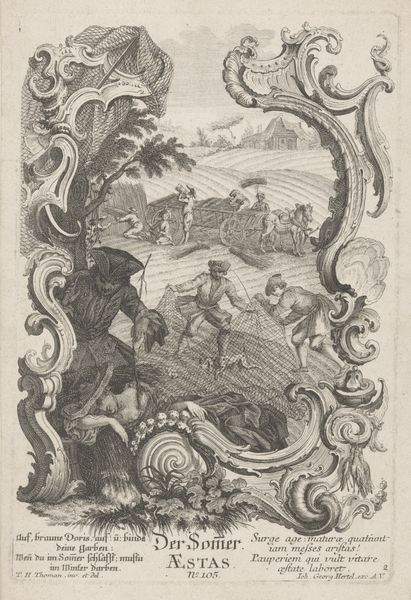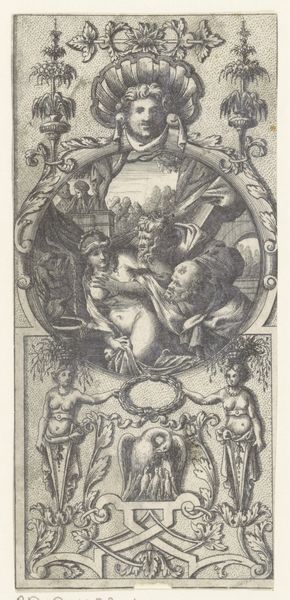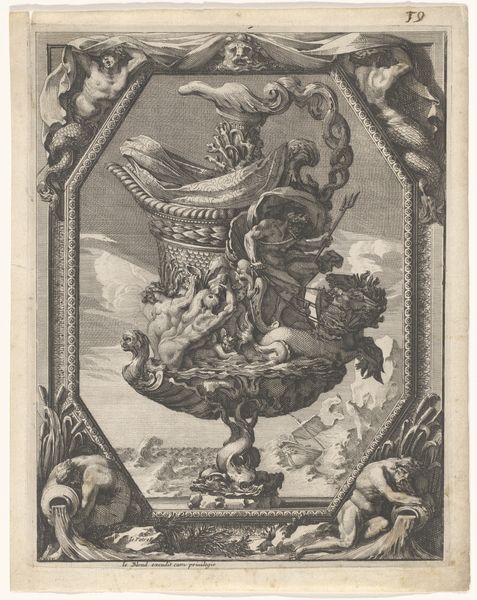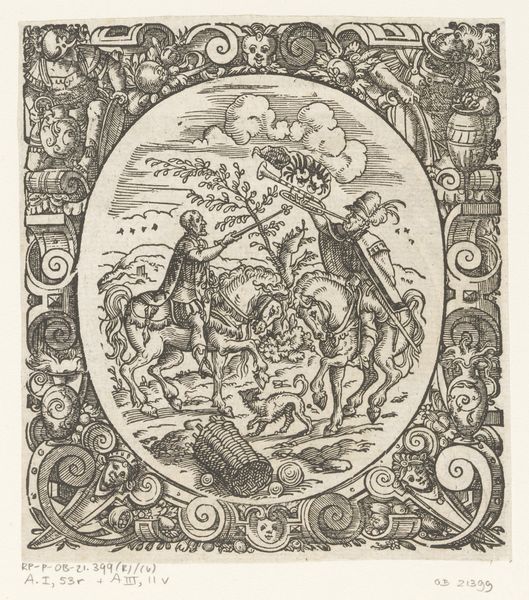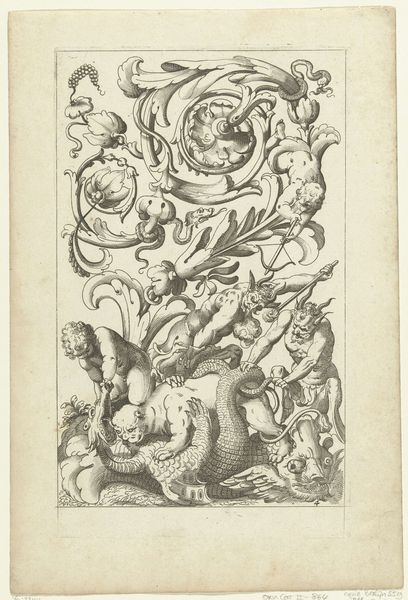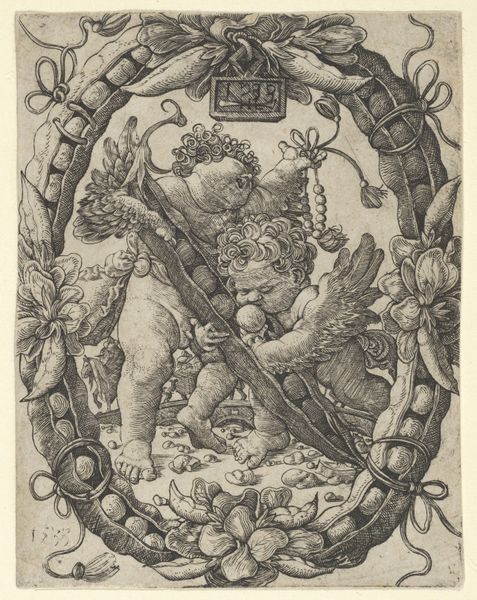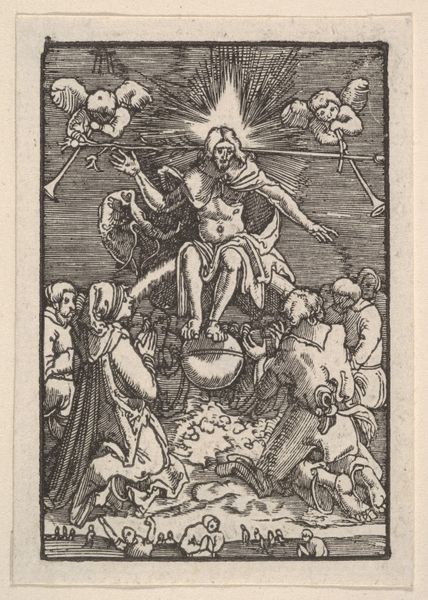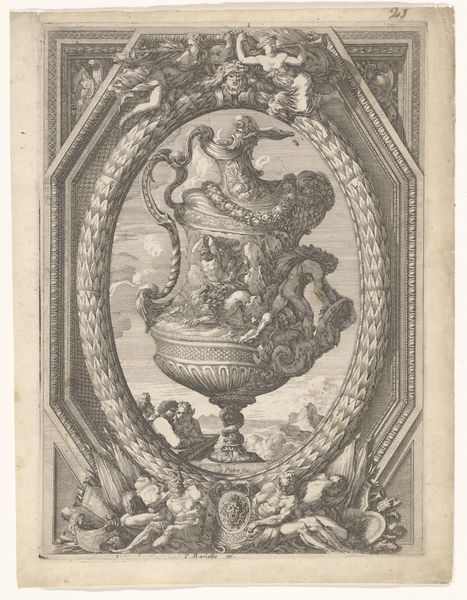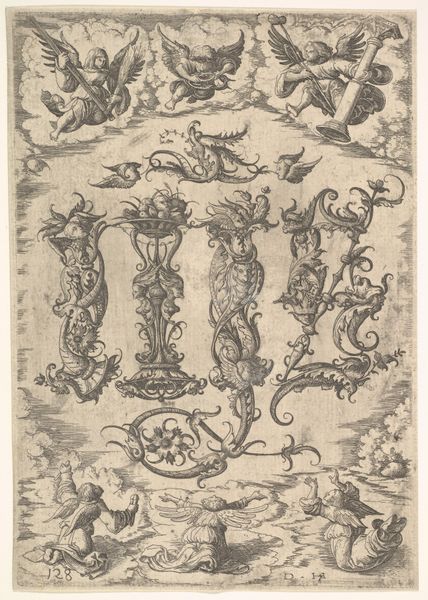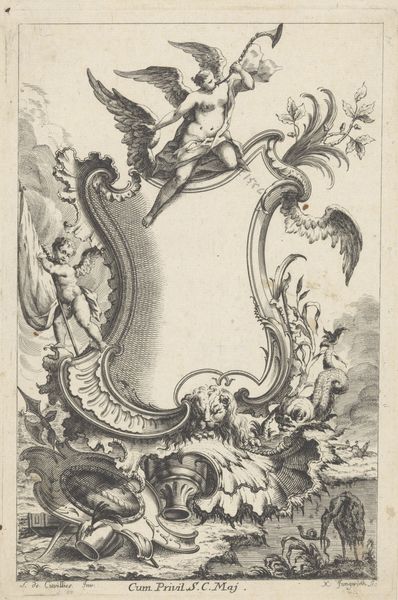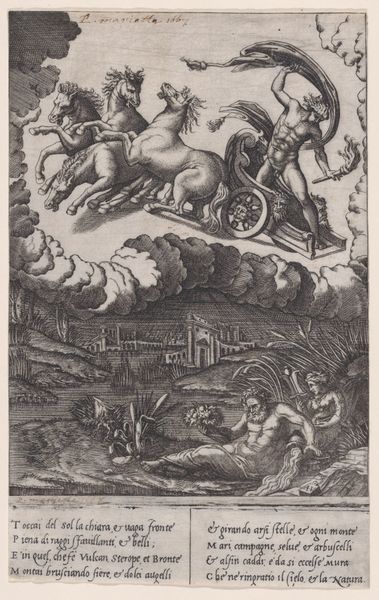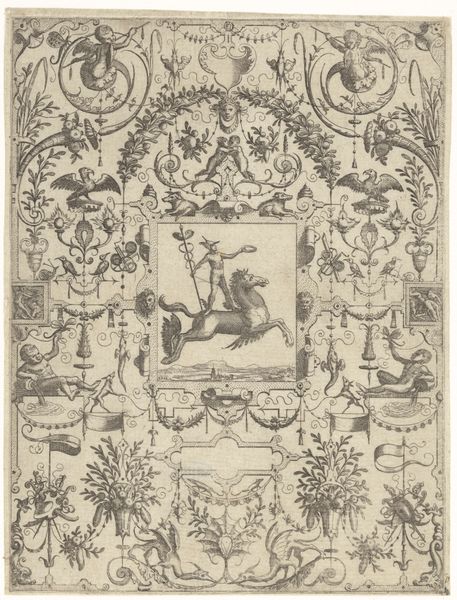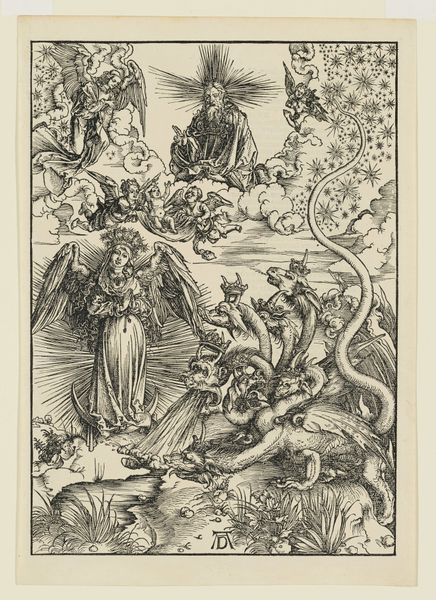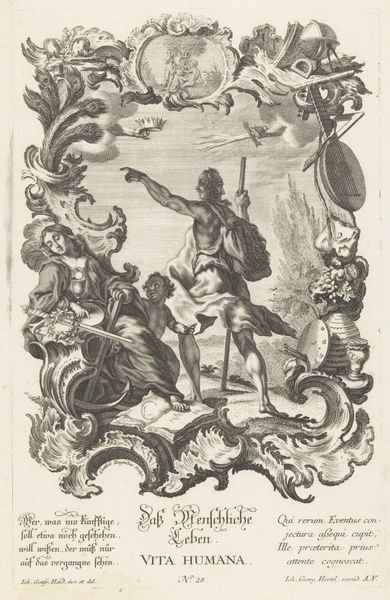
print, engraving
#
baroque
# print
#
figuration
#
history-painting
#
engraving
Dimensions: height 179 mm, width 131 mm
Copyright: Rijks Museum: Open Domain
Curator: We’re standing before an engraving from somewhere between 1565 and 1630, housed here at the Rijksmuseum. The artist is Antonio Tempesta, and the work is entitled "Archangel Michael Slaying the Dragon". Editor: Whew, just taking it in… Visually, it's an overload—but a satisfying one. It's like a well-orchestrated riot in monochrome! There's this whole push-and-pull between the divine serenity up top and this epic smackdown happening below. Drama, thy name is "Archangel Michael." Curator: Indeed. Observe how Tempesta organizes the composition into distinct registers. The upper zone showcases the Holy Trinity—Father, Son, and Holy Spirit—serenely positioned above a cloud bank. Below, Archangel Michael descends, actively engaged in combat. Editor: And that dragon! It’s almost comical in its grotesque-ness. Like a Saturday morning cartoon villain, but you know, with real stakes. It’s hard not to cheer for Michael. Look at the line work; it gives so much depth and movement to what could be a pretty static religious scene. Curator: Note Tempesta's use of line and hatching to render form and create a sense of depth. The varying densities of line suggest tonal variation and contribute to the dramatic tension between light and shadow. Consider how the compact strokes amplify the heavenly realm in contrast with looser, agitated strokes giving form to evil. Editor: You know, beyond the obvious "good versus evil" narrative, this piece feels surprisingly relevant. That tension, that struggle, I think everyone grapples with that, whether they're battling inner demons or outer forces. Plus, let's be real, who doesn't love a winged warrior taking down a dragon? Curator: The work clearly employs established figuration for narrative construction. Furthermore, its reliance on iconography reflects the symbolic language that characterizes Baroque aesthetics and resonates deeply with religious history painting traditions. Editor: What I love most is the sense of kinetic energy exploding from such still image. That perfect freeze-frame of an ongoing saga. Gives you the space to imagine what came before and speculate on what will follow, a timeless struggle captured in ink. Curator: This work’s masterful manipulation of graphic art powerfully presents iconic themes that extend beyond its initial context of Baroque illustration. Editor: Absolutely. Now if you'll excuse me, I feel the urge to watch a fantasy movie!
Comments
No comments
Be the first to comment and join the conversation on the ultimate creative platform.
